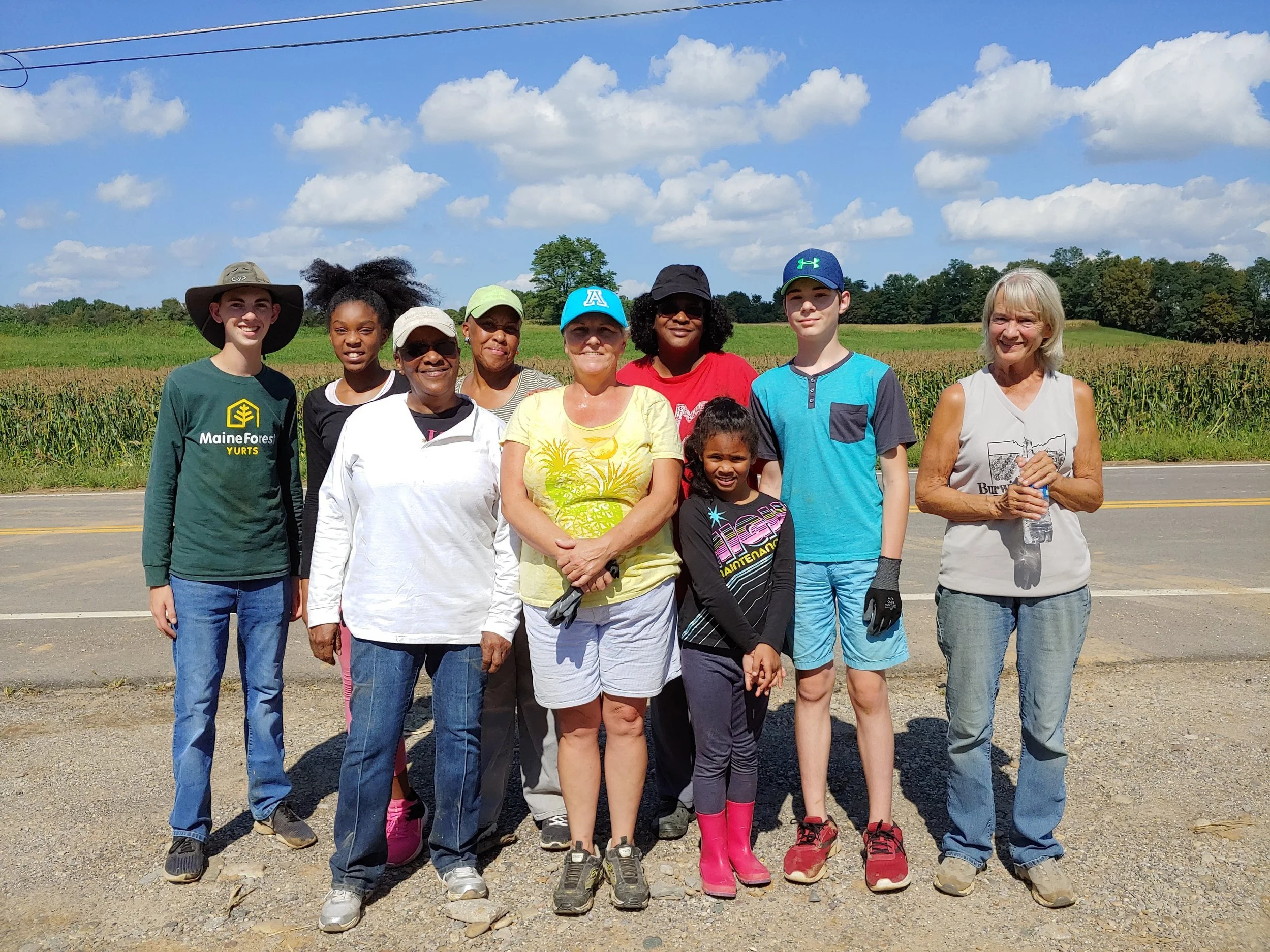When we think of climate change, we tend to look at the big picture. Large manufacturers, coal-fired power plants, deforestation, and large-scale agricultural operations are all examples found in most articles and documentaries that report on global CO2 emissions.
There are pieces of the climate change puzzle that are less obvious because they are not usually a topic found in mainstream media. An example that should be more obvious to all of us is how the food that we purchase at a grocery store gets there. The distances and methods of transporting produce to grocery stores, and ultimately to our table are often described in “food miles” when relating to climate change.
“The distances and methods of transporting produce to grocery stores, and ultimately to our table are often described in “food miles” when relating to climate change.”
To further explain food miles, I’m going to use an example that hit very close to home for my wife and me. We enjoy a side dish of steamed vegetables with every meal partially for the taste, but also the health benefits. The benefits of fruits and vegetable consumption are well known, understood, and supported by scientific evidence. Scientific studies show that a diet rich in Vitamin C increases the immune system properties and decreases oxidative stress and evidence of markers of inflammation.
Blueberries from Mexico
How the food arrives at the local grocery store became a question in my mind when I found that asparagus (one of our favorite vegetables to steam) was available throughout the year. Asparagus is an early-season vegetable, and in the Northern Hemisphere has been fully harvested by the end of June. When finding it on the shelf in November, I became curious as to its origin. The label on the package listed the country of Peru as the exporter.
This discovery led me to inspect the labels of other commonly purchased produce. I found that my beloved grapes were shipped from Mexico, my bananas from Guatemala, and my wife’s favorite snack, blueberries, from Fresno, California.
Grown locally in the Midwest is a 400-mile radius
My interest was further piqued, I looked around the department a bit more and found signs in some areas touting “locally sourced” produce. If asparagus was being imported from Peru and grapes from Mexico, perhaps I could find more information on the company website with information. Generic phrases about fresh local produce were found, and there is a link to seasonal produce, but still no clear information on items that are locally sourced. A quick internet search found the information. My grocery store chain considers” locally grown produce” to be within a 400-mile radius!
I took on further investigation of the sourcing of produce and its impact on the environment by choosing the topic for a class project as part of Miami University’s Project Dragonfly master’s degree in Biology. Conservation issues and community voice are basic tenets of the program, and the topic fit the bill in that regard.
When looking at the sourcing of any edible, it is important to determine as closely as possible where the point of origin might be. If that cannot be determined, a good point of reference might be the region of the US where that item is typically grown, i.e. potatoes from Idaho, apples from Washington state, or blueberries from Michigan. While researching my project, I had to make those assumptions in many cases.
It occurred to me that there might be a significant effect on climate change through the transportation of produce and other food items to keep store shelves stocked at a competitive price. To prove it, I decided to compare the transportation of common items from point of origin to market against the same transport of items to my local Farmers Market in Hyde Park, OH.
Fresh, local produce from our local Farmers Market
To ensure an “apples to apples” comparison, I chose common produce purchases we had been making that would also be available at the Farmers Market. My list included yellow squash, zucchini squash, asparagus, broccoli, grapes, blueberries, and bananas. Sources of each were determined as best as possible, and one assumption made was transportation by truck (payload of a 53-foot tractor-trailer versus a Ford F-150 provided a way to normalize my data, making it relevant) for both grocery store and Farmers Market purchase points. Mileages and emissions were calculated for each. There are emissions calculators available online, and when considering the amount of produce we purchase, the final numbers for grocery store food miles emissions, expressed in kg/Metric Tons came to 1,129.3 kg/MT per week. Our local Farmers Market can provide the same items to us for a total of 3.37 kg/MT per week, a much more environmentally friendly way to shop!
As the Hyde Park Farmers Market only offers produce that we would purchase until the end of October of each year, winter produce availability must be addressed. The Hyde Park Winter Farmers Market does provide some access to produce, but it is also an option to investigate methods of and costs associated with various methods of preservation. Canning, freezing, and pickling can all be options for maintaining a healthy diet of produce throughout the winter months.
An interesting side note to my investigation is that by purchasing our produce at our Farmers Market, the mileage differences in “food miles” between the grocery store and Farmers Market produce options were equivalent to 17 fewer trips to the grocery store.
“While my study focused on how produce transportation miles affect climate change, there are many other benefits to “keeping it local.” ”
While my study focused on how produce transportation miles affect climate change, there are many other benefits to “keeping it local.” Farmers Markets provide benefits on not only the level of access to healthy food at a decent price, but also from economic and environmental perspectives. Financial support of local producers, playing a part in the revitalization of rural economies, and reduction of pollution through a decrease in the transportation miles (the distance from where the food is harvested through all processing and warehousing steps) that the food must travel to reach the grocery store and, eventually, dinner table are among the many good reasons for purchasing local produce from local producers.
Shopping locally may sound like a slogan, but hard science tells us that there are environmental, economic, and health benefits to be derived from supporting all of our local farmers and other businesses.
Mark Plucinski is a retired safety consultant and a graduate student at Miami University’s Project Dragonfly program. His area of focus is pollinators, and his master’s project is to help people to increase pollinator habitats on public and private properties in urban settings. Mark and his wife, Dr. Karen Plucinski, live in Hyde Park, OH.









